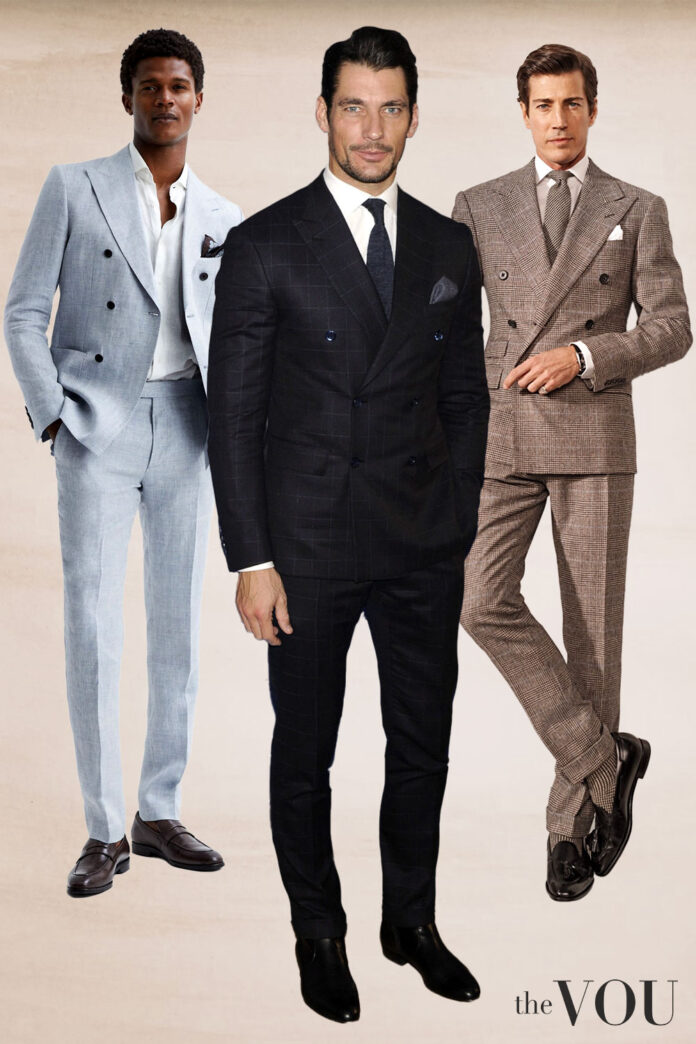Mastering the art of selecting and styling the iconic double-breasted suit is paramount for modern gentlemen seeking to project an image of success and sophistication.
Commanding attention and respect, the double-breasted suit is more than a piece of clothing; it is a statement of power, confidence, and timeless style.
Understanding the DB suit’s roots and styling nuances will give you a distinctive edge that separates the well-dressed from the truly distinguished.
What is a Double-Breasted Suit?
A double-breasted suit is a two-piece or three-piece ensemble consisting of trousers, a jacket, and, optionally, a vest (waistcoat).
The double-breasted suit is distinguished from its single-breasted counterpart by the jacket’s construction with two parallel columns of buttons on the front and an overlapping closure.
The unique DB design creates a symmetrical appearance, typically including peak or notch lapels.
Double Breasted Suit Jacket
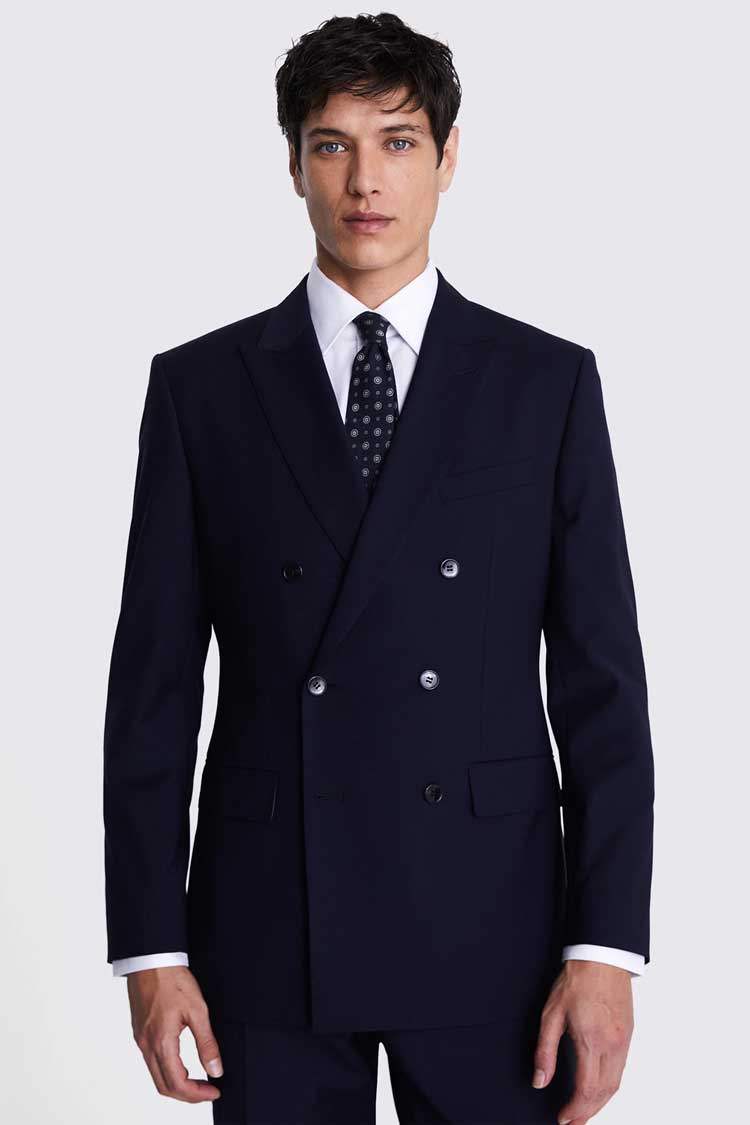
Double-breasted jackets come in various button configurations, denoted by numbers such as 6×2, 6×1, and 4×1.
These numbers describe how many buttons are present and how many can be fastened.
– 6×2: Features six buttons with two that can be fastened, creating a balanced, formal look.
– 6×1: Includes six buttons with only the bottom left used for fastening, providing a sleek, elongated lapel.
– 4×1: Offers four buttons with one button for closure, maintaining a streamlined appearance.
Double Breasted Suit Trousers
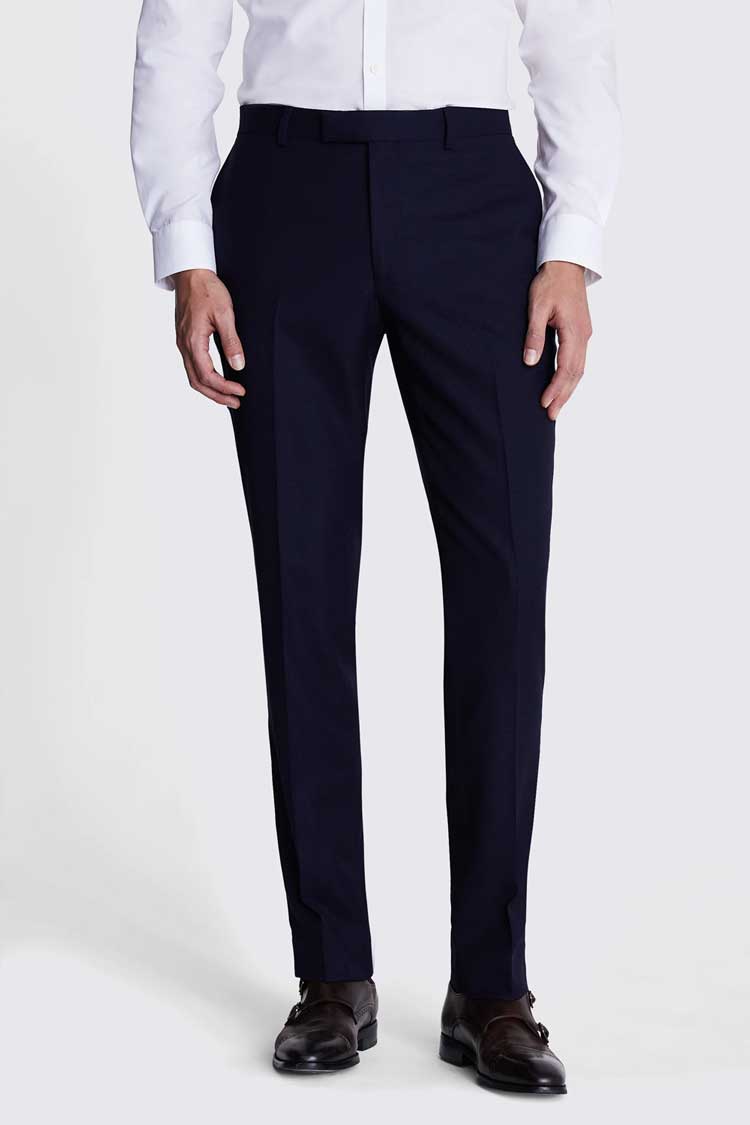
Suit trousers in a double-breasted suit are worn at the waist.
They may feature pleats or a flat front, depending on the style and preference and tailored to match the jacket, ensuring a cohesive appearance.
Double Breasted Suit Vest (Waistcoat)
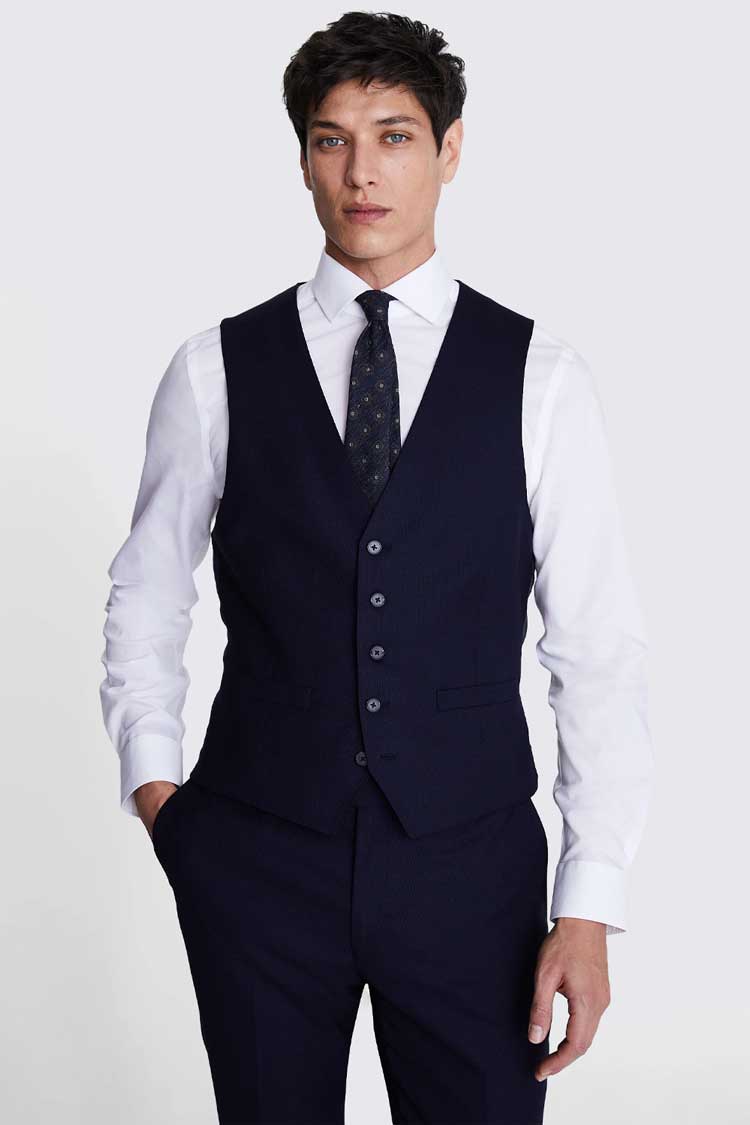
three-piece double-breasted suits come with a vest or a waistcoat.
While not always included, the waistcoat complements the double-breasted suit and adds a layer of sophistication.
When used, it must match the suit’s fabric and colour, unless you deploy Sprezzatura.
How to Wear a Right Double-Breasted Suit
Mastering the art of wearing a double-breasted suit requires attention to detail and understanding its unique characteristics.
Lapel Style
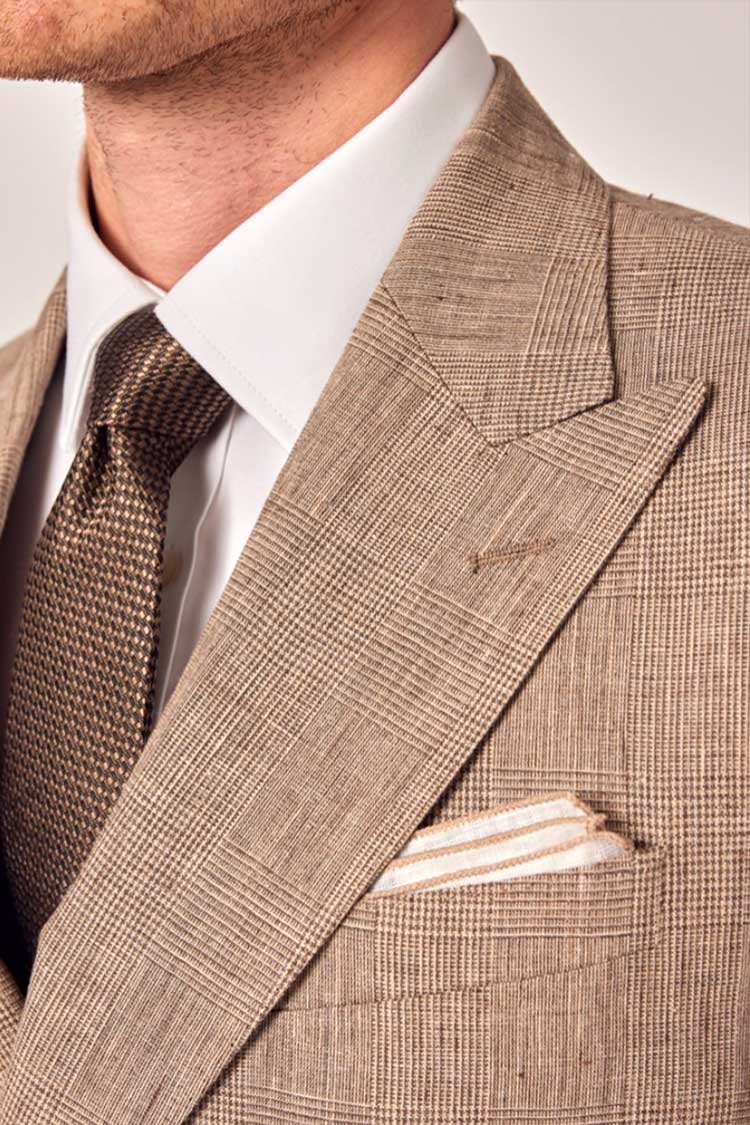
Opt for peak lapels on a double-breasted jacket.
Unlike single-breasted suits, where notched lapels are more common, peak lapels enhance the chest and create a flattering V-shaped silhouette.
This design element draws the eye upwards, making the wearer appear taller and more commanding.
Button Etiquette
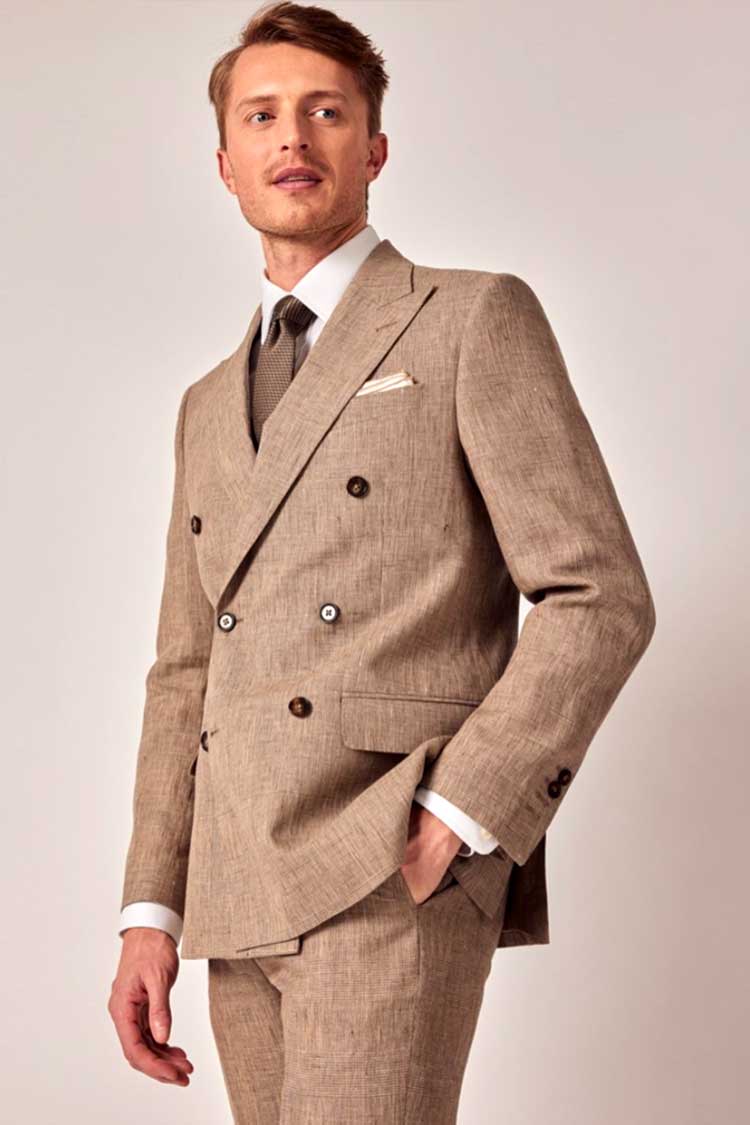
Always remember the golden rule: don’t fasten the bottom button of a double-breasted jacket.
Doing so can restrict movement and disrupt the suit’s clean lines.
Keep the bottom button undone to maintain a polished and effortless look.
Note:
You can button all the the buttons for very formal settings but never wear a double-breasted suit unbuttoned (except when applying Sprezzatura).
Vent Choice

A double-breasted suit traditionally features no vents at the back. However, we recommend a double vents design.
This design element allows freedom of movement while ensuring a smooth and elegant drape, emphasizing the suit’s tailored structure and maintaining the jacket’s impeccable silhouette.
Belt or No Belt?

Avoid wearing a belt with a double-breasted suit.
Belts can disrupt the jacket’s clean lines and cause fabric bunching at the waist.
Instead, opt for trousers with side adjusters or braces (suspenders) for a sleek and tailored look.
Matching Accessories
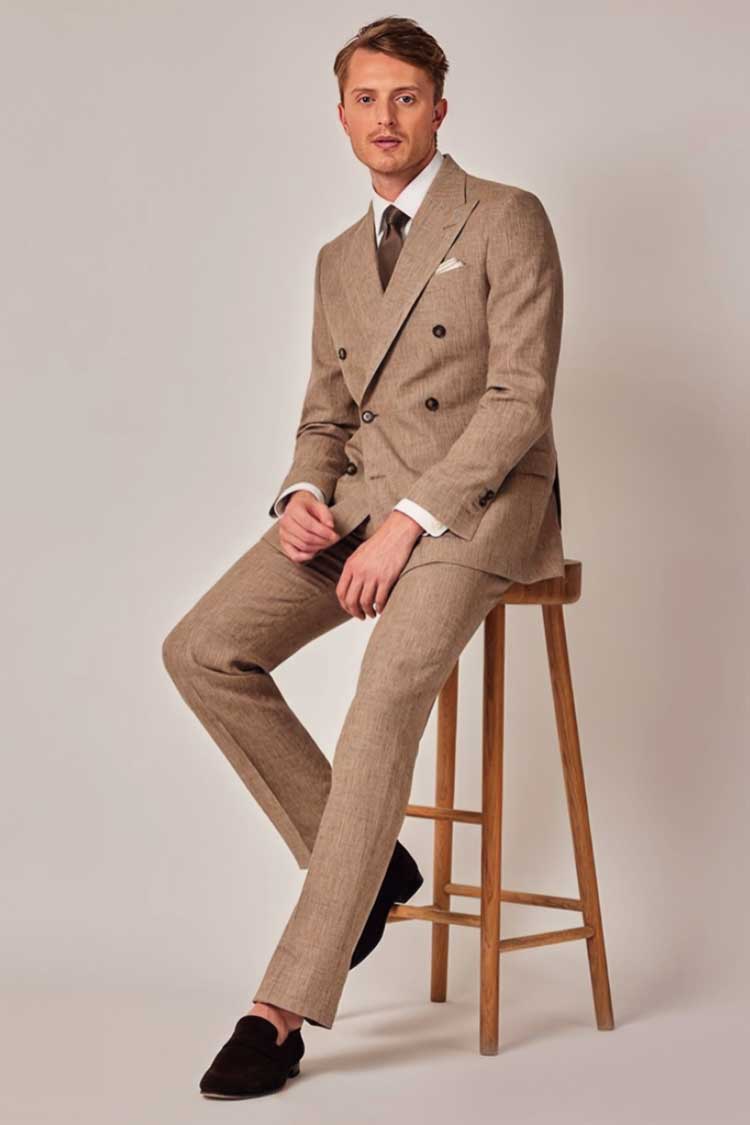
Tie or bow ties must complement the suit’s colour and fabric.
If wearing a waistcoat, ensure it matches the suit jacket for a cohesive appearance.
Accessories should enhance your overall look without overpowering it.
How to Button a Double-Breasted Suit Jacket
The allure of a double-breasted suit lies in its construction and button stance, which contributes to its aesthetic appeal and functionality.
DB Suit Button Configurations
The button stance is described using a ‘number-on-number’ structure, where the first number indicates the total number of buttons present, and the second number denotes how many of those buttons can be fastened.
6×2 Button Configuration
This is perhaps the most classic and widely recognized style. It features six buttons on the front, two of which can be fastened.
The bottom right two buttons are functional, while the topmost two buttons serve as decorative elements, enhancing the symmetry of the jacket.
6×1 Button Configuration
Six buttons are present in this style, but only the bottom left button is used for fastening.
The lapel design extends gracefully past the top buttons, creating a sophisticated and elongated silhouette.
4×1 Button Configuration
This configuration has one functional button for closure out of four buttons.
It maintains a clean and minimalist appearance, suitable for those who prefer a less ornate design.
2×1 Minimalist Button Style
This minimalist configuration features only two buttons, one of which can be fastened.
This configuration offers a sleek and modern look, ideal for those who appreciate simplicity and elegance in their attire.
Specialty Configurations (6×3, 8×4)
While less common in everyday wear, configurations like 6×3 or 8×4 are used in overcoats rather than suits.
These configurations emphasize functionality and warmth in colder climates, maintaining the double-breasted style’s classic charm.
Each button configuration offers unique characteristics, from classic elegance to modern minimalism, ensuring a double-breasted suit suitable for every occasion and personal preference.
When to Wear Double-Breasted Suits
The double-breasted suit’s versatility extends beyond traditional formal settings, making it a valuable addition to any gentleman’s wardrobe.
DB Suits for Formal and Business Settings
A double-breasted suit exudes authority and sophistication, making it ideal for formal business environments.
Whether you’re attending a board meeting, a corporate presentation, or a client dinner, a well-tailored double-breasted suit commands attention and respect.
DB Suits for Formal Occasions
A double-breasted suit is an ideal alternative to the standard single-breasted suit for formal events such as weddings, galas, or charity functions and formal dress codes such as black tie and white tie.
The distinguished and structured silhouette and elegant button stance ensure you stand out with understated elegance.
DB Suits for Stylish Casual Wear
Contrary to popular belief, a double-breasted suit can also be styled for more relaxed settings.
A double-breasted blazer with smart trousers or dark denim creates a sophisticated yet approachable look suitable for dinners, dates, or evening outings.
Opt for fabrics like linen, cotton, or textured wool for a casual vibe.
What is the Origin of the Double-Breasted Suit?
Using buttons and buttonholes in clothing emerged around the 13th century when tailored garments replaced earlier draped and pinned clothing styles.
These early garments required a method to secure the fabric layers together, leading to the development of rows of buttons.
By the 1800s, the double-breasted style began to emerge prominently in fashion.
Initially seen in frock coats worn by men of stature, the double-breasted design offered a symmetrical and structured alternative to its single-breasted counterpart.
This style continued to evolve as fashion shifted towards shorter jackets in the late 19th century.
Double-Breasted Blazer Naval Influence
One significant influence on the modern double-breasted blazer was the naval reefer jacket, colloquially called the pea coat.
Designed for practicality and warmth at sea, these jackets featured the distinctive double-breasted closure we recognize today.
The buttons on naval garments were functional, securing the jacket against harsh weather conditions and offering sailors ease of movement.
Double Breasted Blazer Modern Interpretations
In modern times, the double-breasted blazer has transcended its military origins to become a symbol of elegance and refinement in men’s fashion.
While its functional roots remain evident in its construction, the double-breasted blazer is now embraced for its aesthetic appeal and ability to convey authority and sophistication.
With over twenty years of front-row fashion and styling events, collabs with haute-couture houses, and a PhD in Luxury Fashion, Laurenti is an expert in crafting personalised looks that depict old-money sophistication.
With years of expertise in high-end fashion collabs and a PhD in Sustainable Fashion, Ru specialises in eco-luxe wardrobes for the modern gentleman seeking understated refinement.


